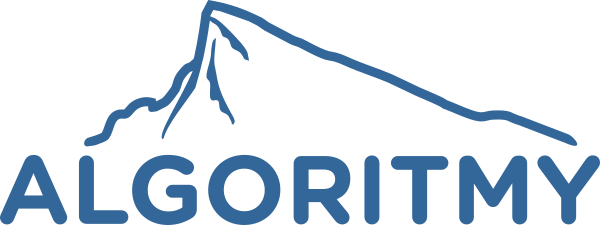Compact schemes for advection equation: Employing inverse Lax-Wendroff procedure
Main Article Content
Abstract
Numerical schemes with implicit discretizations in time can offer unconditionally stable numerical methods to solve hyperbolic problems. Such problems can exhibit in general non-smooth solutions; therefore, a careful choice of approximation methods is necessary to avoid unphysical oscillations in numerical solutions. Such approximation techniques are well developed especially for numerical discretizations in space, but it is well known that an additional non-oscillatory approximation is necessary also for the implicit discretization in time when large time steps are used that are not otherwise necessary for explicit methods. In this work, we investigate how one can reach non-oscillatory behavior by incorporating in a numerical scheme the values of the solution evaluated in future time points. Namely, we investigate the inverse Lax-Wendroff procedure to derive such types of scheme and an application of predictor-corrector to implement them in practice. The purpose of this initial study is to evaluate the applicability of this approach to the representative linear advection equation in the 1D case.
Article Details
How to Cite
Lacková, K., & Frolkovič, P.
(2024).
Compact schemes for advection equation: Employing inverse Lax-Wendroff procedure.
Proceedings Of The Conference Algoritmy, , 149 - 158.
Retrieved from http://www.iam.fmph.uniba.sk/amuc/ojs/index.php/algoritmy/article/view/2165/1036
Section
Articles
References
[1] Antonio Baeza, Raimund Bürger, Marı́a Martı́, Pep Mulet, and David Zorı́o. On approximate implicit Taylor methods for ordinary differential equations. Comp. Appl. Math., 39(4):304,
October 2020.
[2] Jeff Bezanson, Alan Edelman, Stefan Karpinski, and Viral B Shah. Julia: A fresh approach to numerical computing. SIAM review, 59(1):65–98, 2017.
[3] J. R. Cash. On the integration of stiff systems of O.D.E.s using extended backward differentiation formulae. Numerische Mathematik, 34(3):235–246, September 1980.
[4] Stéphane Clain, Gaspar J Machado, and Maria Teresa Malheiro. Compact schemes in time with applications to partial differential equations. Computers & Mathematics with Applications, 140:107–125, 2023.
[5] Karthikeyan Duraisamy and James D. Baeder. Implicit scheme for hyperbolic conservation laws using nonoscillatory reconstruction in space and time. SIAM J. Sci. Comput., 29(6):2607–2620, January 2007.
[6] Peter Frolkovič, Svetlana Krišková, Michaela Rohová, and Michal Žeravý. Semi-implicit methods for advection equations with explicit forms of numerical solution. Japan J. Indust. Appl. Math., 39:843–867, 2022.
[7] Peter Frolkovič and Michal Žeravý. High resolution compact implicit numerical scheme for conservation laws. Applied Mathematics and Computation, 442:127720, 2023.
[8] Peter Frolkovič and Nikola Gajdošová. Unconditionally stable higher order semi-implicit level set method for advection equations. Applied Mathematics and Computation, 466:128460, April 2024.
[9] Friedemann Kemm. A comparative study of TVD-limiters—well-known limiters and an introduction of new ones. Int. Journal for Numerical Methods in Fluids, 67(4):404–440, 2011.
[10] Chang Ho Kim, Youngsoo Ha, Hyoseon Yang, and Jungho Yoon. A third-order WENO scheme based on exponential polynomials for Hamilton-Jacobi equations. Appl. Num. Math., 165:167–183, 2021.
[11] Randall J Leveque. Finite Volume Methods for Hyperbolic Problems. Cambridge UP, 2004.
[12] Gabriella Puppo, Matteo Semplice, and Giuseppe Visconti. Quinpi: Integrating conservation laws with CWENO implicit methods. Commun. Appl. Math. Comput., February 2022.
[13] Jianxian Qiu and Chi-Wang Shu. Hermite WENO schemes for Hamilton-Jacobi equations. J. Comput. Phys., 204(1):82–99, 2005.
[14] James Sethian. Level Set Methods and Fast Marching Methods. Cambridge UP, 1999.
[15] Chi-Wang Shu. Essentially non-oscillatory and weighted essentially non-oscillatory schemes for hyperbolic conservation laws. In Advanced Numerical Approximation of Nonlinear Hyperbolic Equations, Lecture Notes in Mathematics, pages 325–432. Springer, Berlin, Heidelberg, 1998.
[16] Chi-Wang Shu. Inverse Lax-Wendroff Boundary Treatment: a Survey. Communications in Mathematical Research, 38(3):18, 2022.
[17] Jonas Zeifang and Jochen Schütz. Implicit two-derivative deferred correction time discretization for the discontinuous Galerkin method. Journal of Computational Physics, page 111353, 2022.
[18] Hongkai Zhao. A fast sweeping method for eikonal equations. Math. Comput., 74(250):603-627, 2005.
October 2020.
[2] Jeff Bezanson, Alan Edelman, Stefan Karpinski, and Viral B Shah. Julia: A fresh approach to numerical computing. SIAM review, 59(1):65–98, 2017.
[3] J. R. Cash. On the integration of stiff systems of O.D.E.s using extended backward differentiation formulae. Numerische Mathematik, 34(3):235–246, September 1980.
[4] Stéphane Clain, Gaspar J Machado, and Maria Teresa Malheiro. Compact schemes in time with applications to partial differential equations. Computers & Mathematics with Applications, 140:107–125, 2023.
[5] Karthikeyan Duraisamy and James D. Baeder. Implicit scheme for hyperbolic conservation laws using nonoscillatory reconstruction in space and time. SIAM J. Sci. Comput., 29(6):2607–2620, January 2007.
[6] Peter Frolkovič, Svetlana Krišková, Michaela Rohová, and Michal Žeravý. Semi-implicit methods for advection equations with explicit forms of numerical solution. Japan J. Indust. Appl. Math., 39:843–867, 2022.
[7] Peter Frolkovič and Michal Žeravý. High resolution compact implicit numerical scheme for conservation laws. Applied Mathematics and Computation, 442:127720, 2023.
[8] Peter Frolkovič and Nikola Gajdošová. Unconditionally stable higher order semi-implicit level set method for advection equations. Applied Mathematics and Computation, 466:128460, April 2024.
[9] Friedemann Kemm. A comparative study of TVD-limiters—well-known limiters and an introduction of new ones. Int. Journal for Numerical Methods in Fluids, 67(4):404–440, 2011.
[10] Chang Ho Kim, Youngsoo Ha, Hyoseon Yang, and Jungho Yoon. A third-order WENO scheme based on exponential polynomials for Hamilton-Jacobi equations. Appl. Num. Math., 165:167–183, 2021.
[11] Randall J Leveque. Finite Volume Methods for Hyperbolic Problems. Cambridge UP, 2004.
[12] Gabriella Puppo, Matteo Semplice, and Giuseppe Visconti. Quinpi: Integrating conservation laws with CWENO implicit methods. Commun. Appl. Math. Comput., February 2022.
[13] Jianxian Qiu and Chi-Wang Shu. Hermite WENO schemes for Hamilton-Jacobi equations. J. Comput. Phys., 204(1):82–99, 2005.
[14] James Sethian. Level Set Methods and Fast Marching Methods. Cambridge UP, 1999.
[15] Chi-Wang Shu. Essentially non-oscillatory and weighted essentially non-oscillatory schemes for hyperbolic conservation laws. In Advanced Numerical Approximation of Nonlinear Hyperbolic Equations, Lecture Notes in Mathematics, pages 325–432. Springer, Berlin, Heidelberg, 1998.
[16] Chi-Wang Shu. Inverse Lax-Wendroff Boundary Treatment: a Survey. Communications in Mathematical Research, 38(3):18, 2022.
[17] Jonas Zeifang and Jochen Schütz. Implicit two-derivative deferred correction time discretization for the discontinuous Galerkin method. Journal of Computational Physics, page 111353, 2022.
[18] Hongkai Zhao. A fast sweeping method for eikonal equations. Math. Comput., 74(250):603-627, 2005.

